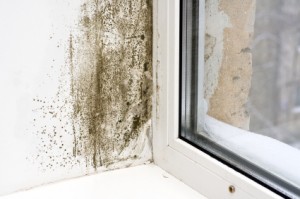Miami Mold Remediation
 The first step in solving an indoor mold problem is stopping the source of moisture. Next is to remove the mold growth. Common remedies for small occurrences of mold include:
The first step in solving an indoor mold problem is stopping the source of moisture. Next is to remove the mold growth. Common remedies for small occurrences of mold include:
- Sunlight
- Ventilation
- Wall insulation
- Non-porous building materials
- Household cleansers
- Dehumidifiers
Cleanup and removal methods
The purpose of the clean-up process is to eliminate the mold and fungal growth and to remove contaminated materials. As a gen
- eral rule, simply killing the mold with a biocide is not enough. The mold must be removed since the chemicals and proteins, which cause a reaction in humans, are still present even in dead mold. Often times it is best to hire a Miami professional to perform professional mold remediation services.
Cleaning Recommendations
- First, make sure to remove any object near the insulation system that may have been contaminated from floodwater. To properly dispose of the contaminated materials according to your local, State, and Federal regulations.
- Make sure to remove the contaminated HVAC filter media to ensure your HVAC system is not bringing in contaminated air. Make sure to dispose of it reading the same regulations listed above.
- Remove any debris and insulation; clean all components of the HVAC system to ensure nothing becomes contaminated and/or more contaminated from floodwater. Use a HEPA-filtered vacuum, cleaner to make sure you get rid of all the debris, dirt, and microorganisms. Pay special attention to the drain pans, filter areas, curves, and air ducts since debris often collects in these places.
- Disinfect all components of the HVAC system after turning off the HVAC system. To clean use 1 cup of normal household chlorine bleach mixed with a gallon of water; do not mix this with cleaning products containing ammonia.
- Be sure to use fans to create filtration by blowing the contaminated air outdoors, to protect the health of the workers.
- After cleaning all components with bleach rinse with clean water to eliminate the potent bleach smells.
- IMPORTANT: You must remove and properly discard the HVAC components that are contaminated with floodwater to prevent the growth of mold if it cannot be cleaned, and replace them with new components.
- After the HVAC has been properly cleaned and disinfected, replace the insulation in the HVAC system with an external, smooth-surfaced insulation to prevent future floodwater contamination.
· To ensure safety have your HVAC system tested by a qualified Miami mold remediation professional before you begin using your HVAC system again.


